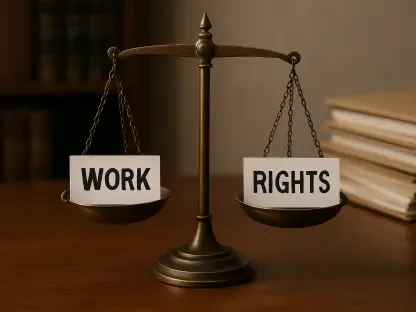Middle managers seem to be disappearing from American workplaces. Companies are slowly eliminating their responsibilities, a process called “The Great Unbossing.” Part of this is happening because of economic uncertainty, but some of it is due to advances in technology. All in all, we are witnessing its major impact on the US workforce.
This trend is happening across different types and sizes of businesses. HR needs to understand this phenomenon so they can either avoid or manage the negatives thereof effectively. In recent downsizing and reorganizations, 30% of all the people laid off were middle managers. That’s up from 20% in the last five years, according to a report from Live Data Technologies. In comparison, only 14% of the bosses above them got laid off.
For example, Bayer, a pharmaceutical company, is planning to reduce corporate red tape and have employees manage themselves in 2024. They want to have fewer bosses and focus on creating and nurturing teams that can make their own decisions. Some stakeholders are still apprehensive about this big change, but experts say it has both good and bad aspects, so we will be examining both.
Why Are Companies Unbossing?
For most of the organizations moving towards “unbossing”, however, these new structures usually do not entirely eliminate executives. Instead, we see an increased adoption of a flatter, less hands-on approach. Senior leaders or employees themselves take on more decision-making responsibilities in self-managed teams.
Expectedly, getting rid of middle managers can pose challenges for organizations with autonomous teams. Middle managers are the connection between leadership and frontline employees, and their intermediary skills ensure teams can put strategic goals into action effectively. Also, it has been a conscientious, quick way for employees to receive the necessary support.
So let us pinpoint the potential issues and opportunities related to eliminating middle managers.
The Downside Of ‘The Great Unbossing’
Without middle managers, employees can find themselves scrambling to organize, lacking support from their company, and may struggle to make decisions, especially important ones. Not only will this lead to reduced job satisfaction, but most people will start to feel uncertain about their career paths. If employees find themselves “bossless,” it reduces the number of opportunities for them to learn and grow. It might also lead to a more hierarchical company culture, where employees feel they have fewer opportunities to express their concerns or influence the company’s decisions.
In the event of unbossing in a company, business leaders must be responsive and compensate to help affected workers. Communication should be open, and team members should have a way to voice their concerns and get help.
1. Lack Of Support In Leaner Leadership Models
When there isn’t a manager to go to, some employees might find it hard to perform well.
Flattening the leadership hierarchy often creates gaps in day-to-day support, guidance, and feedback, which are important for employee development and business results, according to Aitken.
We’re not saying employees need daily support. Most employees want some independence — and organizations want strong critical thinkers. However, most people still require someone to bounce ideas off and get feedback in order to develop and thrive.
2. Frontline Managers And Employee Engagement
Frontline managers play a big role in keeping employees engaged. In fact, studies show that 70% of team engagement is because of the manager. If bosses and executives are not present, employee focus goes down.
3. Accountability In The Workplace
Some people struggle with taking responsibility for their actions. This is where having a manager helps. Their guidance and regular check-ins help to hold people accountable.
Employees who are unsupervised might be more likely to quietly leave their jobs by doing the bare minimum when there is less oversight and infrequent check-ins.
For younger workers who are new to their careers, not having a direct manager to guide them can be risky. Many need help navigating the work world, not just with their roles and the company; a frontline manager is the first mentor and accountability partner.
The 3 Upsides Of ‘The Great Unbossing’
Middle management positions are valuable in creating a direct line of communication between employees and senior executives, leading to a flatter organizational structure. This change gives employees better access to senior leadership and can help reduce inefficiencies caused by too many layers of command.
1. Enhancing Agility
It seems that stakeholders believe that eliminating middle managers will accelerate decision-making processes by putting that trust into an independent workforce. They plan to allow lower-level employees to make more autonomous decisions, expecting quicker responses to changes and opportunities. Fewer management levels also promote a culture of agility and proactive problem-solving.
2. Optimizing Team Dynamics
Direct and clear communication would help members of smaller teams collaborate more effectively. The aim is to exterminate misunderstandings and ensure prompt information delivery. Smaller groups also encourage more efficient interactions, creating a stronger sense of unity and shared purpose. Improved communication speeds up decision-making and problem-solving, leading to higher productivity and overall organizational effectiveness.
3. Cost Reductions
Having fewer middle managers can save organizations money due to reduced payroll expenses and overhead costs. Combining roles and responsibilities can lead to more efficient resource use and streamlined operations, ultimately improving the company’s financial stability and profitability. This can allow the organization to invest in strategic initiatives for growth and innovation, enhancing its competitive position in the market.
How To Mitigate Micromanagement And Enhance Operational Efficiency
If you want to navigate the challenges of micromanagement or enhance operational efficiency due to previous experiences with micromanagement, there are strategies to consider based on current trends.
To mitigate micromanagement tendencies, experts suggest you should focus on enhancing manager training in order to make them more capable of responding to current and future workplace requirements. For example, learning how to take advantage of AI tools to streamline administrative tasks can empower them to concentrate on strategic and supportive functions.
On the other side of the cubicle, providing employees with autonomy and equipping them with the necessary tools for self-management will be vital. A leaner, flatter organizational structure demands all involved parties to cultivate a culture centered on goal-setting, regular check-ins, constructive feedback, and recognition. Maintaining open communication channels remains as significant as ever, assisting robust engagement despite reduced supervision “from above.”
Embracing ‘Unbossing’: Challenges Today, Rewards Tomorrow
Experts agree that while there are some short-term challenges, in the long run, they believe that embracing the concept of “unbossing” can be beneficial. But who knows what the workplace will look like in 2034? Experts say it is too early to state facts, but one must still acknowledge the above-mentioned limitations, emphasizing that leaders must be willing to show vulnerability, receive coaching for self-awareness, and be open to change.
Chances are, not all companies will eliminate their middle managers, but for those that do, we will be seeing some major disruptions across multiple industries, so it is never too early to start preparing accordingly.
As both hard-working managers and the highly educated workforce start to experience these and similar changes, they should work together to develop a structure that best fits their specific situations. Stakeholders should think long and hard about the long-term impact on employee engagement and organizational culture before implementing “unbossing,” despite the potential short-term efficiency gains.









